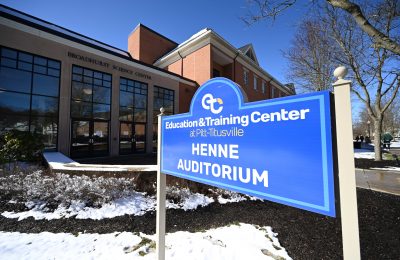It’s no secret that many industries in America are feeling the talent crunch. According to a recent survey by the Business Roundtable, 95 percent of American CEOs believe their companies suffer from a skills shortage. In fact, about 60 percent of job openings require basic science, technology, engineering and math literacy, and 42 percent require advanced STEM skills. The skills gap poses serious challenges for America’s businesses and the economy — and a critical reason why career and technical education should be at the forefront.
Experts agree that firms that recruit for manufacturing roles are expected to experience the greatest shortage of unskilled workers.
According to a Skills Gap study by Deloitte and the Manufacturing Institute, nearly 3.5 million manufacturing jobs likely need to be filled over the next decade. The skills gap is expected to result in 2 million of those jobs going unfilled.
At the same time, many experts agree that growth in technology has been outpacing talent supply, and a shortage of technological, analytical and data-mining skills also have employers scrambling.
Business and industry have long recognized that career and technical education (CTE) can play a critical role in developing the next generation of workers.
A recent study on CTE has found that career and technical education is highly beneficial to not only employers but students, as well.
Overall, students with greater exposure to CTE are more likely to graduate from high school, enroll in a two-year college, be employed and earn higher wages, according to Career and Technical Education in High School: Does it Improve Student Outcomes?, from the Thomas B. Fordham Institute.
The study also debunks the myth that CTE students don’t attend college. In fact, the study found these students are as likely as their peers to pursue a four-year degree. In terms of high school graduation, CTE gives students a considerable advantage. When compared to students the study deemed similar, CTE students are 21 percent more likely to graduate from high school.
What’s Our Potential?
In this issue of the Business Magazine, we’ll delve into the topic of technical education and the career opportunities that are available in our region. We’ll talk with George Currie from the Erie Regional Manufacturer Partnership (ERMP) on what ERMP and its supporters are doing to address the skills gap and the issue of workforce development. We’ll also hear from Michael Victor, Mercyhurst University’s 12th president, on how he is helping to usher in a new era of innovative programs that will allow future leaders to adapt to the changing world of business and technology.
As a leader in professional development programs for more than 20 years, the Manufacturer & Business Association’s expert trainers also deliver the knowledge and skills you and your organization need to compete. Be sure to check out this month’s Training Schedule for all the latest offerings or visit our website at www.mbausa.org to learn more.















